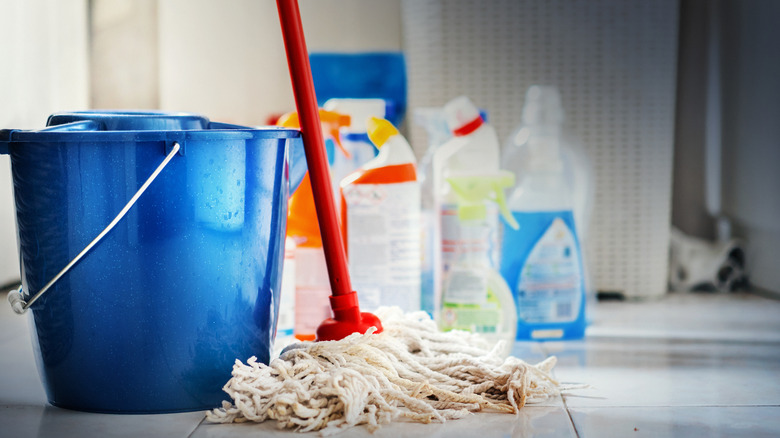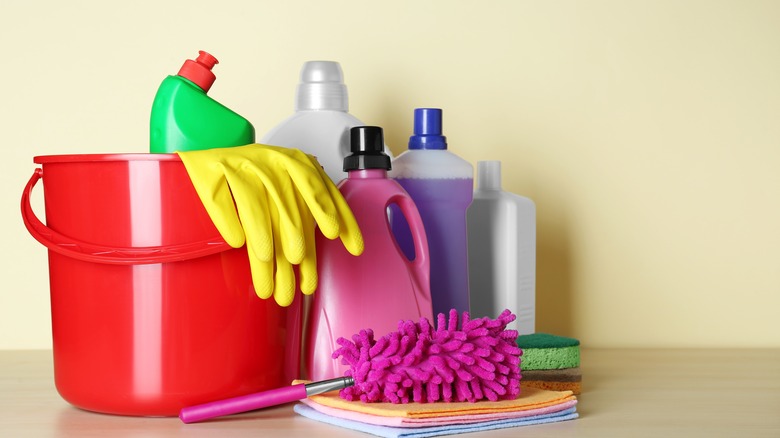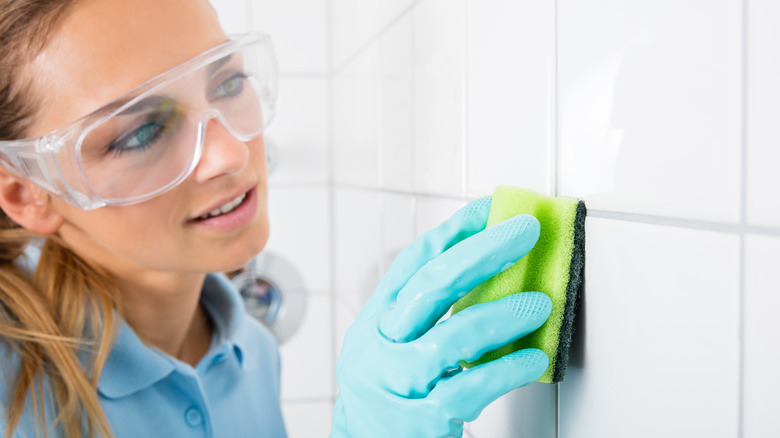Avoid This Dangerous Mistake When Cleaning With Ammonia
Ammonia, renowned for its potent cleaning abilities, is a staple in many households for tackling tough stains and grime. However, its effectiveness belies the inherent dangers associated with improper use. One of the most significant risks arises when ammonia is inadvertently mixed with other common household cleaners, leading to potentially hazardous chemical reactions. For example, ammonia and bleach are household chemicals you should never mix together, as the results can be incredibly dangerous.
Mixing chemicals can result in unforeseen and potentially dangerous consequences. Each household product contains a unique combination of ingredients carefully formulated for specific cleaning tasks. Despite the convenience of combining cleaning products to tackle stubborn stains or odors, when these chemicals interact with one another, they can react unpredictably when brought together, creating volatile results. What may seem like a harmless mixture could lead to the release of toxic fumes or the formation of harmful compounds. The risks associated with chemical mixing are not limited to the immediate environment. Toxic fumes released during these reactions can linger in the air, posing a threat to anyone nearby. In poorly ventilated spaces, these fumes can accumulate to dangerous levels, increasing the likelihood of adverse health effects for occupants of the household.
Dangers in mixing chemicals
The danger lies in the volatile nature of the compounds formed when ammonia interacts with certain substances, such as vinegar. When ammonia is combined with bleach, for example, the mixture produces chloramine gas, a toxic substance that can cause respiratory distress and irritation to the eyes, nose, and throat. Chest pain, nausea, and wheezing are other potential symptoms. This reaction underscores the importance of avoiding haphazard mixing of cleaning products. The potential for chemical reactions to occur inadvertently adds another layer of risk to the equation. Many household cleaners contain ingredients whose compatibility with ammonia may not be immediately apparent to consumers. Without proper knowledge and awareness, individuals may unknowingly create hazardous combinations while attempting to tackle routine cleaning tasks.
The danger of mixing ammonia with other cleaning products is a stark reminder of the importance of informed decision-making and precautionary measures. By understanding the potential risks and consequences associated with chemical interactions, you'll know which cleaning products you should use with caution in your kitchen or elsewhere in your home, thereby minimizing the likelihood of harm to yourself and your loved ones.
Safety precautions when using ammonia
When using ammonia for cleaning purposes, it's crucial to prioritize safety to mitigate the risks of exposure to harmful fumes and chemical reactions. Adequate ventilation is paramount, as it helps dissipate any fumes produced during cleaning. Diluting ammonia with water according to manufacturer instructions can also reduce its potency and minimize the risk of releasing toxic gases.
Protective gear such as gloves, goggles, and a mask should be worn to shield against skin and respiratory irritation. Do not eat, drink, or smoke while using ammonia, and wash hands thoroughly after use. Proper storage of ammonia in its original container, away from other household chemicals and out of the reach of children and pets, helps minimize the risk of accidental exposure. If ammonia is accidentally mixed together with other chemicals, a dangerous reaction could become apparent if there is bubbling, hissing, or heat. In this instance, you can try diluting the mixture with plenty of water, but it may be safer to leave the area until the reaction no longer exists. Dispose of the products when it's safe to do so. By adhering to these safety precautions and exercising caution when handling ammonia, individuals can effectively harness its cleaning power while safeguarding their health and well-being.


